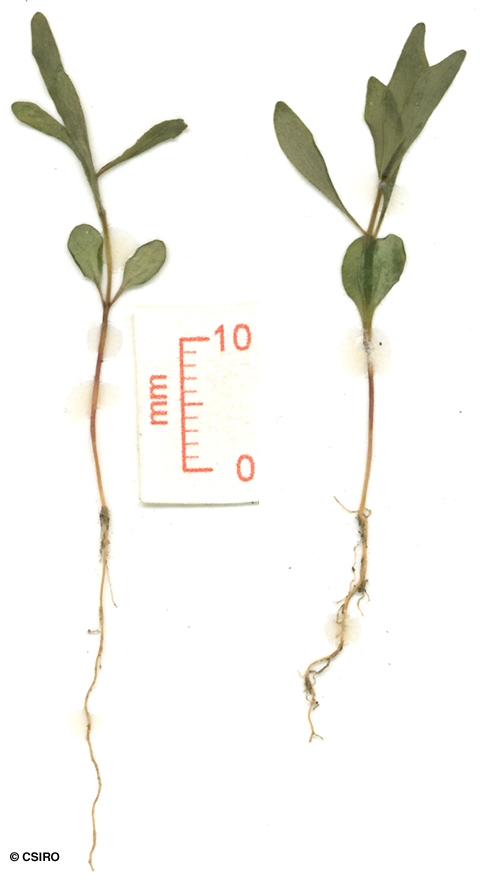Australian Tropical Rainforest Plants - Online edition
Asteromyrtus brassii (Byrnes) Craven




Craven, L.A. (1988) Australian Systematic Botany : 379.
Leaf blades about 50-60 x 9-11 mm, petioles about 2-4 mm long. Venation longitudinal and parallel with about 5 or 6 veins more prominent than the rest. Intramarginal vein difficult to discern.
Inflorescence globose, sessile. Calyx tube (hypanthium) about 8.5 x 5 mm, slightly hairy on the outer surface, lobes about 4.5 mm long. Petals about 5 x 3 mm. Stamens aggregated in five groups by fusion of the filaments, each group consisting of about 30-35 stamens. Free portion of the filament about 4 mm long, anthers globose, less than 0.5 mm diam. Style red, about 9 mm long.
Infructescence globose, about 18-20 mm diam. Individual capsules about 11 mm diam. Seeds about 4 x 1 mm, winged at the apex and along each side. Embryo about 3 mm long.
Cotyledons elliptic, about 7 x 4 mm, midrib visible but no other veins apparent. Oil dots visible near the margin. At the tenth leaf stage: leaf blade elliptic, ovate to slightly rhomboid, about 45-60 x 10-12 mm, apex apiculate, base cuneate to attenuate, oil dots numerous. Venation longitudinal with 3 veins usually visible on each side of the midrib. Petiole very short or absent. Seed germination time 10 to 19 days.
Occurs in CYP. Altitudinal range from 30-500 m. Usually grows in heath, woodland or open forest, but occasionally found in or on the margins of rain forest on a variety of sites. Also occurs in New Guinea.
A small tree being introduced into horticulture. The flowers are red and attract birds.





